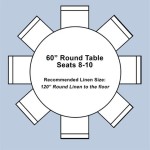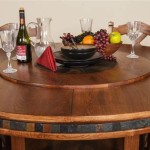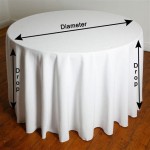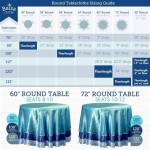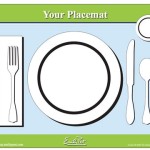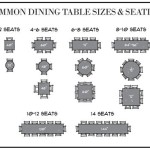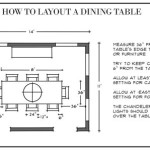How to Make a Table Runner with Backing
A table runner serves as a decorative element that can enhance the aesthetic appeal of a dining table, side table, or console. It adds a touch of style and personality to a space, and can be tailored to various occasions and décor themes. Incorporating a backing fabric provides structure, durability, and a finished look. This article provides a comprehensive guide on how to create a table runner complete with a backing, ensuring a professional and long-lasting result.
The process involves selecting appropriate fabrics, accurately measuring dimensions, precisely cutting the chosen materials, carefully sewing the main fabric to the backing, and finishing the edges to create a polished appearance. This guide details each of these steps with clear instructions and helpful tips.
Choosing Fabrics and Materials
The selection of fabrics is a crucial first step in crafting a table runner. The primary fabric should be chosen based on the desired aesthetic, durability, and ease of care. Cotton, linen, and medium-weight home décor fabrics are popular choices for their versatility and availability in a wide range of colors and patterns. Silk and velvet can be used for more formal or luxurious settings, however, these fabrics may require more careful handling and specialized cleaning methods.
The backing fabric serves several important functions. It provides stability to the table runner, prevents the top fabric from stretching or distorting, and adds a layer of protection to the table surface. Muslin, cotton duck, or a similar weight fabric are generally recommended for backing. The backing fabric does not necessarily need to be decorative, as it will not be visible when the table runner is in use. However, selecting a color that complements the primary fabric can contribute to a cohesive overall design. Consider pre-washing both the primary and backing fabrics to prevent shrinkage after the table runner is completed.
In addition to the fabrics, a few essential supplies are needed. These include a rotary cutter or fabric scissors, a cutting mat, a ruler or measuring tape, pins, thread that matches both the primary and backing fabrics, a sewing machine, and an iron. A walking foot for the sewing machine can be particularly helpful when working with multiple layers of fabric, as it ensures even feeding and prevents slippage.
Measuring and Cutting Fabric
Accurate measurement is critical to ensuring the table runner fits the intended table properly. Begin by determining the desired length and width of the table runner. A general guideline is to allow the table runner to overhang the table by 6 to 12 inches on each end. However, this can be adjusted based on personal preference and the specific dimensions of the table.
Once the desired dimensions have been determined, add seam allowances to all sides of both the primary and backing fabrics. A standard seam allowance of ½ inch is generally sufficient. For example, if the desired finished length of the table runner is 60 inches and the desired finished width is 14 inches, the primary and backing fabrics should each be cut to 61 inches in length and 15 inches in width.
Use a rotary cutter and cutting mat for the most accurate and efficient cutting. Alternatively, fabric scissors can be used. Always measure and mark the cutting lines carefully before cutting. Ensure the fabric is laid flat and smooth to prevent any distortion. Double-check all measurements before proceeding to the next step.
Sewing and Finishing the Table Runner
With the primary and backing fabrics cut to the correct dimensions, the sewing process can begin. Place the primary fabric face up on a flat surface. Then, place the backing fabric face down on top of the primary fabric, aligning the edges of the two fabrics. Pin the fabrics together securely around all four edges, placing the pins approximately every 3 to 4 inches.
Using a sewing machine, sew around all four sides of the table runner, leaving a gap of approximately 6 to 8 inches on one of the longer sides. This gap will be used to turn the table runner right-side out. Backstitch at the beginning and end of each seam to secure the stitches. Trim the corners of the sewn fabrics diagonally to reduce bulk when the table runner is turned right-side out.
Carefully turn the table runner right-side out through the opening. Use a point turner or a similar tool to gently push out the corners, ensuring they are sharp and well-defined. Press the table runner flat with an iron, paying particular attention to the edges and corners. Fold the raw edges of the opening inward, aligning them with the sewn seam. Pin the opening closed.
There are several options for finishing the edges of the table runner. One common method is to simply topstitch around the entire perimeter of the table runner, closing the opening in the process. Topstitching involves sewing a straight stitch approximately ¼ inch from the edge. Another option is to hand-stitch the opening closed using a blind stitch, which creates an invisible seam.
For a more decorative finish, consider adding binding to the edges of the table runner. Binding involves encasing the raw edges of the fabric with a strip of fabric that is folded and sewn in place. Bias tape, which is a pre-cut strip of fabric that is cut on the bias, is often used for binding as it allows for greater flexibility and ease of handling, especially around curved edges.
Alternatively, a decorative stitch can be used along the edge of the table runner. Many sewing machines offer a variety of decorative stitches that can add visual interest and a unique touch. Experiment with different stitch patterns to find one that complements the design of the table runner. Make sure to test the chosen decorative stitch on a scrap piece of fabric before applying it to the actual table runner.
Another method involves creating mitered corners. Mitering corners provides a clean and professional finish. To miter the corners, fold the fabric on each corner diagonally to create a 45-degree angle. Press the fold with an iron to create a crease. Trim the excess fabric, leaving a ½ inch seam allowance. Then, unfold the fabric and sew along the crease. Turn the corner right-side out and press flat. This creates a crisp, clean corner.
Adding Embellishments and Personal Touches
Once the basic table runner is complete, there are numerous ways to add embellishments and personalize the design. Appliqués, embroidery, and decorative trims can be used to enhance the visual appeal of the table runner and create a unique piece.
Appliqués involve attaching fabric shapes or designs to the surface of the table runner. These can be cut from felt, cotton, or any other fabric and sewn in place by hand or machine. Appliqués can be used to create intricate patterns, represent specific themes, or add pops of color.
Embroidery can also be used to add detail and texture to the table runner. Hand embroidery allows for intricate and personalized designs, while machine embroidery is a quicker option for creating more complex patterns. Consider adding embroidered borders, monograms, or floral motifs.
Decorative trims, such as lace, fringe, or ribbon, can be sewn along the edges of the table runner to add a finishing touch. Choose trims that complement the style and color scheme of the main fabric. Experiment with different types of trims to create a unique and personalized look.
Another option is to stencil designs onto the fabric using fabric paint. Stencils can be purchased or created at home using cardboard or plastic sheets. This is a cost-effective way to add intricate patterns and designs to the table runner. Ensure to use fabric paint that is designed to withstand washing and ironing.
Furthermore, consider adding tassels or pom-poms to the ends of the table runner. These can be purchased pre-made or created at home using yarn or string. Tassels and pom-poms add a playful and decorative touch to the table runner.
By carefully selecting fabrics, accurately measuring and cutting materials, sewing the main fabric to the backing, and finishing the edges with attention to detail, anyone can create a beautiful and functional table runner with backing. The addition of embellishments and personal touches can further enhance the design and create a truly unique piece that will complement any table setting.

How To Sew A Simple Table Runner Through My Front Porch

Diy Ruler Table Runner

How To Make A Table Runner The Easy Way Semigloss Design

How To Make A Table Runner With Border Step By Sewing Tutorial

Easy Jelly Roll Quilt Bed And Table Runner Pattern Sewing Tutorial

Diy Ruler Table Runner

Diy Ruler Table Runner

One Hour Table Runner Tutorial Complete Step By Instructions

Free Projects 10 Minute Table Runner In 2024 Diy Pattern

Quick Easy Table Runner Carla Pineapple Pack Pattern Keepsake Quilting
Related Posts

